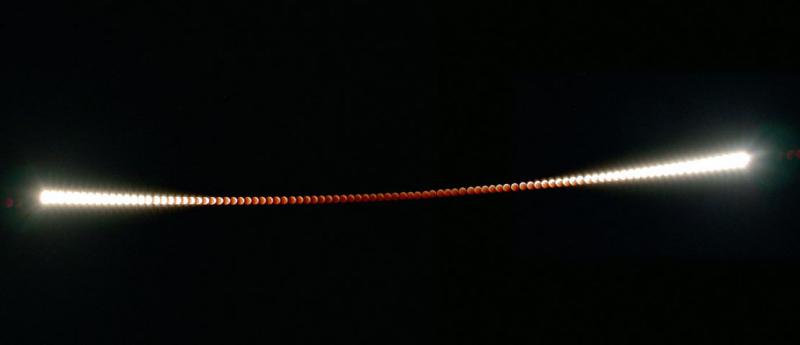Credit & Copyright: Forrest J. Egan
(Digital Astro)
Explanation:
During last week's lunar eclipse, our Moon appeared to disappear.
As the Earth moved between the Moon and the Sun, the
Earth's shadow fell on the moon, making it
quite dark.
In the above picture the Earth's rotation, multiple exposures, and
digital enhancements are used to create a time-lapse effect that dramatizes how the
Moon looked as it faded out and re-appeared during the three hour
lunar eclipse.
As the Earth's shadow
engulfed the Moon, the lunar images became less and less bright,
practically disappearing during
totality.
At this time, the Moon, which normally shines by
reflecting direct sunlight, shone only by sunlight refracted through the
Earth's atmosphere.
The next total lunar eclipse won't be visible from Earth
until 2007.
1999 2000 2001 2002 2003 2004 2005 2006 2007 2008 2009 2010 2011 2012 2013 2014 2015 2016 2017 2018 2019 2020 2021 2022 2023 2024 2025 |
Yanvar' Fevral' Mart Aprel' Mai Iyun' Iyul' Avgust Sentyabr' Oktyabr' Noyabr' Dekabr' |
NASA Web Site Statements, Warnings, and Disclaimers
NASA Official: Jay Norris. Specific rights apply.
A service of: LHEA at NASA / GSFC
& Michigan Tech. U.
|
Publikacii s klyuchevymi slovami:
lunar eclipse - Sun - Moon - lunnoe zatmenie - Solnce - Luna
Publikacii so slovami: lunar eclipse - Sun - Moon - lunnoe zatmenie - Solnce - Luna | |
Sm. takzhe:
Vse publikacii na tu zhe temu >> | |
